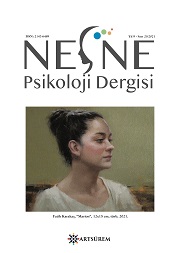Kırılma Noktası: İkinci Nesil İntihar Kuramları
Breaking Point: Second Generation Suicide Theories
Author(s): Burcu Pınar BulutSubject(s): Social psychology and group interaction, Clinical psychology, Behaviorism, Health and medicine and law
Published by: Sanat ve Dil Araştırmaları Enstitüsü
Keywords: Suicide; suicide theories; risk factors; suicidal behavior;
Summary/Abstract: Suicide is the second leading cause of death among young people in the world. In this respect, it is emphasized that theories explaining suicidal behavior should be examined to understand the factors behind suicidal behavior. Many theorists have proposed different ideas in explaining suicidal behavior and its occurrence until the beginning of the twenty-first century. These theories are discussed as psychological, sociological, and biological theories. Psychoanalytic Theory, Spiritual Theory, Hopelessness Theory, and Escape Theory were among the psychological theories. It would not be wrong to call these theories first-generation suicide theories. On the other hand, after the 2000s, contemporary psychological theories dealing with suicidal behavior with risk factors have attracted attention. These theories have been called second-generation suicide theories because they have been put forward more recently. Considering the need to examine these theories under a single roof, in this article, the Interpersonal Theory of Suicide, Three-Step Theory of Suicide, Integrative Motivational-Volitional Model, and Fluid Vulnerability Theories are presented. Moreover, an overview of the psychological mechanisms underlying suicidal behavior development has been submitted, and a critical discussion has been made. These theories show that the factors and processes that support the development of suicidal thoughts are different from those associated with suicidal behavior. Hopelessness and suicidality are the common points of theories. In addition, these theories focused on dynamic risk factors and risk assessment that appear in life, change over time, and immediately bring them closer to suicide.
Journal: Nesne-Psikoloji Dergisi
- Issue Year: 9/2021
- Issue No: 20
- Page Range: 418-431
- Page Count: 14
- Language: Turkish

